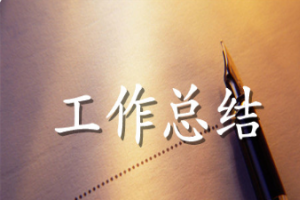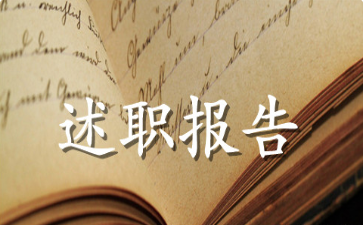介绍西安英文导游词文档大全
时间:2020-10-15 来源:博通范文网 本文已影响 人 
想要介绍陕西的西安吗?那么都要哪些好的导游词呢?那么介绍西安英语导游词要怎么写,以下是小编为大家整理的介绍西安英文导游词范文,供大家参考学习。
介绍西安英文导游词1
Inside the fourth courtyard, there is a structure called the PhoenixPavilion, a place where worshipers wait for services. The pavilion, in fact, isa complex of three small buildings. The six-gabled structure in the central partis adjoined by two three-gabled buildings on each side which make it look like aflying phoenix; hence its name. Just at the back of the pavilion there is a fishpond, and beyond it is a platform with an area of 700 square meters. Acrotheplatform stands the 1,300-square-meter prayer hall. It holds over 1,000worshipers at a time. The ceiling is decorated with over 600 panels. The wallsof the hall, as well as the panels, are decorated with patterns of trailingplants and Arabic letters. The shrine at the western end of the hall is wherethe imam and worshipers chant the Koran and pay homage while facing in thedirection of Mecca.
The Moslems in China share much the same customs with their brothers andsisters elsewhere in the world. They worship five times a day: at dawn, at noon,in the afternoon, at dusk, and at night.
The Constitution of China acknowledges that each citizen has the rightfreedom of religion, and that each ethnic group has the freedom to preserve orreform its own customs. Of course, the Moslems in China enjoy equal rights withother ethnic groups, and their religious beliefs and customs are respectedeverywhere in the country.
Huaqing Pool is situated about 35 kilometres east of the city of Xian.Historically, the Western Zhou dynasty saw the construction of the Li Palace onthe spot. In the Qin dynasty a pool was built with stones, and was given thename Lishan Tang (the Lishan Hot Spring). The site was extended into a palace inthe Han dynasty, and renamed the Li Palace (the Resort Palace). In the Tangdynasty, Li Shimin (Emperor Tai Zong) ordered to construct the Hot SpringPalace, and Emperor Xuan Zong had a walled palace built around Lishan Mountainin the year of 747. It was known as the Huaqing Palace. It also had the nameHuaqing Pool on account of its location on the hot springs.
The Tang dynasty Emperor Xuan Zong and his favourite lady, Yang Gui Fei usedto make their home at Frost Drifting Hall in winter days. When winter came,snowflakes were floating in the air, and everything in sight was white. However,they came into thaw immediately in front of the hall. It owed a great deal tothe luke warm vapour rising out of the hot spring. This is the Frost DriftingHall that greets us today.
介绍西安英文导游词2
Situated at the northern foot of Mt. Lishan in Lintong County, 30 kilometers(18.6 miles) from Xian City, Huaqing Hot Spring is famed for both its daintyspring scenery and the romantic love story of Emperor Xuanzong (685-762) and hisconcubine Yang Guifei in the Tang Dynasty (618-907). Its long history andlocation among the wonderful landscapes of Xian should entice any visitor tovisit and bathe in this hot spring.
It is said that King You built a palace here during the Western Zhou Dynasty(11th century BC-711 BC). Additions were subsequently made by the First EmperorQing (259 BC-210BC) and Emperor Wu during the Western Han Dynasty (206 BC-24).During his reign, the Emperor Xuanzong spent dizzying amounts of his funds tobuild a luxurious palace, changing its name to Huaqing Hot Spring or HuaqingPalace. Over the course of 41 years in his days, he visited the palace as manyas 36 times. The palace thus has a history of 3,000 years and the hotspring ahistory of 6,000 years! Ranked among the Hundred Famous Gardens in China, italso has the status as a National Cultural Relic Protection Unit and a NationalKey Scenic Area.
A Visit to the Huaqing Hot Spring
Entering the gate which bears the inscription 'Huaqing Chi' (Huaqing HotSpring) by Guo Moruo, a noted literary in China, visitors are greeted by twotowering cedars. By continuing inward passing two symmetrical palace-styleplunge baths and turning right, you will see the Nine-Dragon Lake. Despite thefact that the lake is artificial with an area of 5,300 square meters (6339square yards), it constitutes one of the main enchanting sceneries in theHuaqing Palace. You will see lotus floating on the water and emitting sweetfragrance, and a white marble statue of Yang Guifei - recognised as one of thefour most beautiful women in ancient China - stands tall by the lake like a shyand appealing fairy. Mirrored in the lake you will see a surrounding complex ofconstructions interspersed with willows and rocks, including Frost Flying Hall(Feishuang Hall) in the north, Yichun Hall and Chenxiang Hall respectively inthe east and west as well as Nine Bend Corridor and Dragon Marble Boat. Themagnificent Frost Flying Hall used to be the bedroom of Emperor Xuanzong andYang Guifei, with red supporting pillars and fine-patterned carving. Living in aplace so full of spice must have made the inhabitants invigorated andpleased.
Walking southwards through Dragon Marble Boat and several pavilions, you willfind the Site of Imperial Pool, which is the only one of its kind to bediscovered in China. The five remaining pools are the Lotus Pool, Haitang Pool,Shangshi Pool, Star Pool and Prince Pool. The lotus-like Lotus Pool was made forthe Emperors' bath, the Haitang Pool resembling a Chinese Crabapple was intendedfor concubines, and the Shangshi Pool was designated for officials. It is saidthat the former Star Pool had no roof and nothing to cover its four sides.There, must have been possible to truly experience the eternal beauty of YangGuifei.
Huan Garden is the former garden of the Huaqing Palace. There lie the LotusPavilion, Viewing Lake Tower (Wanghu Lou), Flying Rainbow Bridge (Feihong Qiao),Flying Glow Hall (Feixia Ge), and Five-Room Hall (Wujian Ting). In popularlegend, the Flying Glow Hall was once the place where Yang Guifei would overlookthe scenery and cool down her long hair. The Five-Room Hall was built in thelate Qing Dynasty (1644-1911). It was the shelter of Empress Dowager Cixi afterthe Eight-Power Allied Force captured Peking in 1900, and was also the temporaryresidence of Chiang Kai-shek, the leader of the Chinese Nationalist Party duringthe world-famous Xian Incidence in 1936. The Huan Garden also features alarge-scale mural carrying the inscription 'Yang Guifei Was Summoned to Servethe Emperor in Huaqing Hot Spring'. Composed of 90 white marbles, the mural is9.15 meters (30 feet) long and 3.6 meters (11.8 feet) high. Depicting the sceneof the feast in which Emperor Xuanzong summoned Yang Guifei, it reflects theprosperity of the Tang Dynasty. Odes of Huaqing Hot Spring are also witnesses ofpast politics, economy and art.
By visiting the Huaqing Hot Spring, you will not only enjoy the scenery, butalso taste the joy of imagining yourself back in the days of the TangDynasty.
介绍西安英文导游词3
Huaqing Pool is situated about 35 kilometres east of the city of Xi’an.Historically, the Western Zhou dynasty saw the construction of the Li Palace onthe spot. In the Qin dynasty a pool was built with stones, and was given thename Lishan Tang (the Lishan Hot Spring). The site was extended into a palace inthe Han dynasty, and renamed the Li Palace (the Resort Palace). In the Tangdynasty, Li Shimin (Emperor Tai Zong) ordered to construct the Hot SpringPalace, and Emperor Xuan Zong had a walled palace built around Lishan Mountainin the year of 747. It was known as the Huaqing Palace. It also had the nameHuaqing Pool on account of its location on the hot springs.
Huaqing Pool is located at the foot of the Lishan Mountain, a branch range ofthe Qinling Ranges, and stands 1,256 metres high. It is covered with pines andcypresses, looking very much like a like a dark green galloping horse from along distance. So it has the name of the Lishan Mountain (Li means a blackhorse).
The Tang dynasty Emperor Xuan Zong and his favourite lady, Yang Gui Fei usedto make their home at Frost Drifting Hall in winter days. When winter came,snowflakes were floating in the air, and everything in sight was white. However,they came into thaw immediately in front of the hall. It owed a great deal tothe luke warm vapour rising out of the hot spring. This is the Frost DriftingHall that greets us today.
介绍西安英文导游词4
Xi'an (Chinese:西安),is the capital of the Shanxi province in the People'sRepublic of China .As one of the oldest cities in Chinese history,Xi'an is oneof the Four Great Ancient Capitals of China because it has been the capital ofsome of the most important dynasties in Chinese history,including theZhou,Qin,Han,the Sui,and Tang dynasties.Xi'an is the eastern end of the SilkRoad .The city has more than 3,100 years of history,and was known as Chang'an(traditional Chinese:长安).
Long holidays are usual during Spring Festival,Labor Holiday (1-7 May),andNational Holiday (1-7 October).The number of travellers is often greater duringSummer (May-August),although the most pleasant season for visiting Xi'an isAutumn.
Xi'an is a beautiful city with a very colorful history.There are so manyfamous buildings in xian,such as clay sulelievs,Banpo village museum and soon.If one day you come to Xi'an,you'd better visit some places of interest,sothat you can learn more knowledges about this city.At last,I'm sure that you canhave a great time in Xi'an.
介绍西安英文导游词5
Some of the most well-known sites in Xi'an are:The city is surrounded by awell-preserved City wall of Xi'an which was re-constructed in the 14th centuryduring the early Ming Dynasty and was based on the inner imperial palace of TangDynasty.The Mausoleum of Qin Shi Huang and his Terracotta Army are located 40 kmto the east of the city centre,in the city's suburbs.The Bell Tower and DrumTower,both are located at the city's central axis.The city's Muslimquarter,which is home to the Great Mosque of Xi'an.The Giant Wild Goose Pagodaand Small Wild Goose Pagoda are both spectacular towers and both are well over1,000 years old and have survived great earthquakes.The former is next to alarge square with the largest fountain in Asia which projects water high intothe air,rising and falling in time to music during one of the daily performances(usually at noon and soon after sunset).They protected Buddhist writings in thepast.
The Stele Forest is famous for its numerous historic inscriptions andstoneworksThe Famen Temple and its towering pagoda located on the city'soutskirtXi Ming TempleWolong Temple at Kaitong laneXingjiao Temple at ShaolinYuan (where Xuanzang's Tomb lies)Jianfu TempleBlue Dragon TempleWangji TempleTheBanpo Neolithic village is located on the outskirt of the city properTheQianling Mausoleum,one of the many Tang Dynasty era tombs located in Xi'anTheShaanxi History Museum has a large collection of artifacts both modern andancient.Mount Hua is one of the most visited and steepest mountains in thecountryMount Zhongnan (终南山)Mount TaibaiMount LiHuaqing Hot Springs (华清池),at thefoot of Mt.Lishan,have a history of 6,000 years,the adjacent Huaqing Palace hasa history of 3,000 years.Ranked among the Hundred Famous Gardens in China,italso has the status as a National Cultural Relic Protection Unit and a NationalKey Scenic Area.
介绍西安英文导游词范文相关文章:








